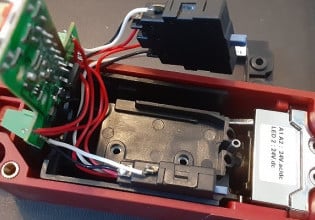GE, Fraunhofer, and Voxeljet Partner to Develop New 3D Printing Technology for Various Industrial Applications
Industry leaders in renewable energy are partnering to create a casting cell and integrate new 3D printing technology in wind turbines.
Expanding 3D Printing Technology into the Industrial Sector
GE Renewable Energy, a leader in clean energy systems, partnered with Fraunhofer, a casting and processing company and research institute. These companies combined their resources with VoxelJet, a 3D printing company that has recently become more well-known in additive manufacturing.

A binder jetting machine used to 3D print wind turbines. Image used courtesy of Voxeljet
To shorten the turnaround time to erect GE’s Haliade-X offshore wind turbine, these companies are researching to develop the “world's largest” binder jet 3D printer. This printer, known as the Advanced Casting Cell, will hopefully create turbine components faster than before.
Molding the Future
Many companies specializing in 3D printing and binder jet processes have started using reusable molds for manufacturing components rapidly. However, the slow part of the process is typically getting the molds built. The turnaround time to build parts for the Haliade-X can be two weeks compared to 10 weeks with binder jet 3D printing technology.
Binder jet printing is a two-step process of laying down fine powdered sand, metal, and other alloys followed by a filtered pass of binder material. This binder material fuses the fine particles into a lattice structure.

A diagram showing the binder jet process. Image used courtesy of Voxeljet
Additive manufacturing may allow engineers to create and print more high-quality, topological designs while simultaneously printing at a high rate and lowering the carbon footprint produced through manufacturing.
Having a large format additive manufacturing machine onsight could potentially reduce transportation costs. This process may also reduce faults and failures in the manufacturing and assembly processes.
Decentralized manufacturing means that disadvantaged countries and locations now have access to means of renewable energy systems. Due to these capabilities, more support, funding, and policies, many researchers project that the offshore wind turbine industry is expected to become a one trillion dollar industry.
The Advanced Casting Cell
The advanced casting cell will be capable of producing parts with a diameter up to 9.5 meters that can weigh up to over 60 tons.
In a recent news release, Dr. Daniel Günther, Head of Department Molding Processes and Molding Materials at Fraunhofer IGCV, stated, “We are taking a close look at thermal management during casting, and we will evaluate the ideal proportions of the printing materials. We will develop and test new approaches to process monitoring as part of the project.”

A size reference of casting cell. Image used courtesy of Voxeljet
As part of this project, these partners are also looking critically at the cost of 3D printing. “We aim to optimize the mold printing to avoid extremely costly misprints or even miscasts, to save on binder and activator, and to improve mechanical and thermal behavior during casting. By developing a process that conserves resources as much as possible, we want to help to improve the environmental and cost balance in the manufacture of wind turbines,” added the institute director, Prof. Dr. Wolfram Volk.
These companies are hopeful that the development of this new casting cell will help 3D printing techniques be implemented in other industrial manufacturing sectors.
Though additive manufacturing does not contend with the rate of molding, its capabilities are being leveraged to accelerate the molding process further while reducing costs and the use of materials. Many industry leaders in industrial manufacturing have already adopted additive manufacturing to create large-scale parts. Now it's starting to create the means of tooling for rapidly produced end-use parts.
GE Renewable Energy, Fraunhofer, and Voxeljet are hopeful that this partnership will set a new expectation for how engineers can use 3D printing in industrial applications.






